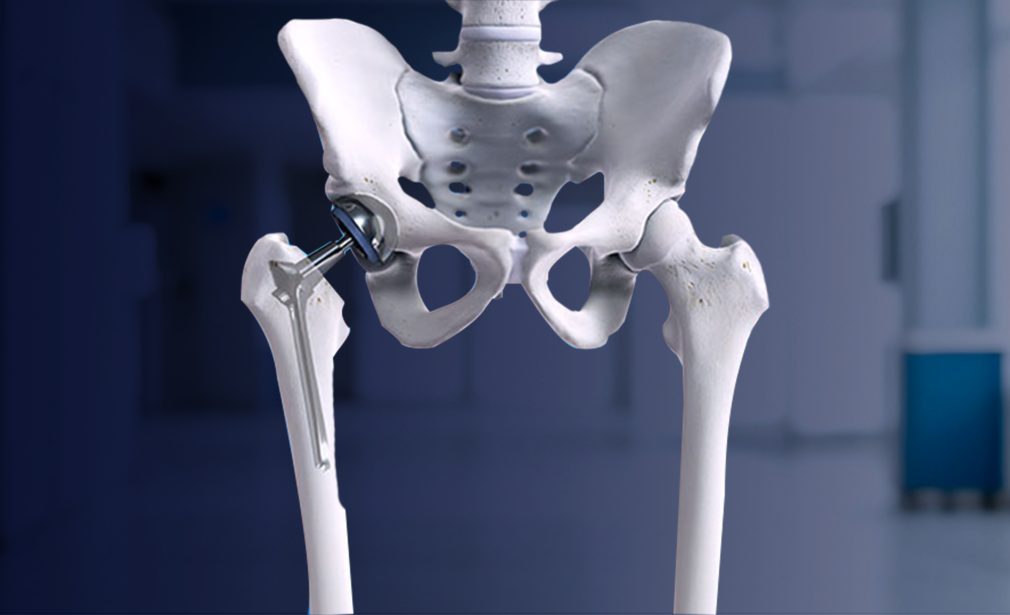Total Hip Replacement is a surgical procedure in which a damaged or worn-out hip joint is replaced with an artificial joint (prosthesis). It’s typically recommended when pain and mobility issues from conditions like arthritis or injury severely impact daily life.
The procedure involves removing the diseased bone and cartilage from the hip socket (acetabulum) and the femoral head (top of the thigh bone) and replacing them with prosthetic components made of metal, ceramic, or plastic. The common symptoms are:
- Persistent pain in the hip or groin, especially during or after activity.
- Difficulty moving the hip, especially after sitting or in the morning.
- Trouble bending, walking, or rotating the leg.
- Discomfort even when lying down or sleeping.
- A noticeable limp or change in walking pattern to avoid pain.
- Struggles with climbing stairs, getting in/out of chairs or cars.
- Chronic swelling around the hip joint.
- The hip may feel weak or unstable while walking or standing.
Frequently asked questions
It’s a surgical procedure where the damaged parts of the hip joint are replaced with artificial components to relieve pain and improve function. People with severe hip pain and disability due to conditions like osteoarthritis, rheumatoid arthritis, avascular necrosis, or hip fractures.
Most prosthetic hips last 15–20 years, sometimes longer with good care.
Initial recovery takes 4–6 weeks, but full recovery can take 3–6 months depending on overall health and physical therapy progress.
Most patients experience significant pain relief, though some mild discomfort or stiffness may persist temporarily during recovery.
Yes—most people can return to daily activities like walking, driving, and even light sports (like swimming or cycling) after recovery.
Absolutely. Physical therapy is key to regaining strength, mobility, and preventing complications.
In some cases, yes. This is called bilateral hip replacement, but it depends on overall health and doctor’s recommendation.
Possibly. Modern implants may trigger detectors. You can carry a medical ID card or inform security staff.


